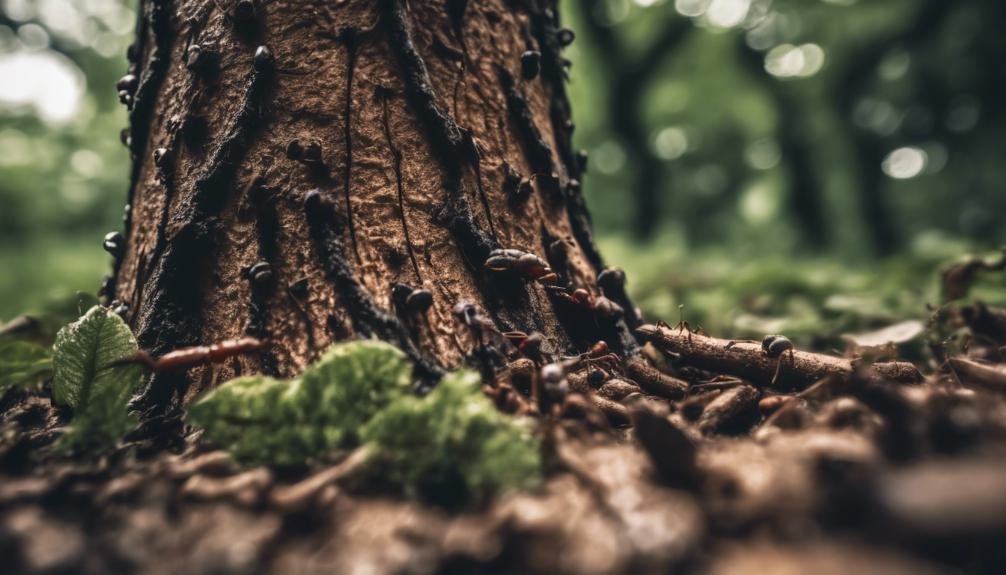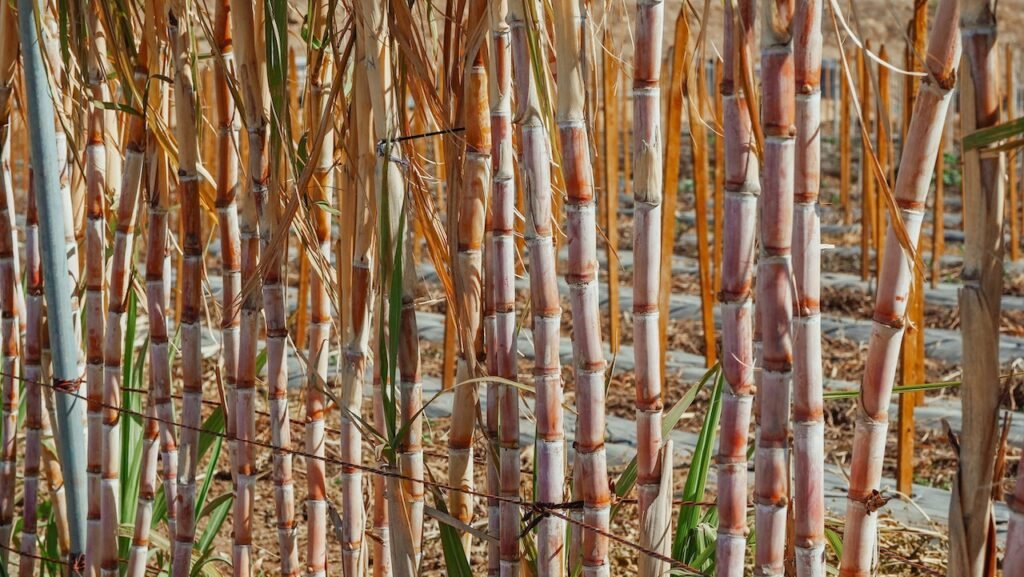Ants can wreak havoc on your yard by infesting trees, posing significant threats to their health, longevity, and stability. Two primary species, red imported fire ants and carpenter ants, are attracted to sweet saps and honeydew, making trees an ideal habitat. Early detection of ant infestations is critical, as it enables prompt intervention and prevents further damage. Identifying ant activity, such as small, dark-colored ants crawling up and down the tree trunk, or unusual tree damage like holes or tunnels, is vital. To effectively mitigate harm, it is essential to understand the unique characteristics of each species and the most effective removal methods, which can involve a combination of non-chemical and chemical approaches.
Key Takeaways
- Two primary ant species, red imported fire ants and carpenter ants, infest trees, posing different levels of threat to tree health and longevity.
- Early detection of ant infestations is critical, as it enables prompt intervention and prevents further damage to the tree.
- Removing ants from trees often requires a multi-faceted approach that incorporates both non-chemical and chemical methods.
- Implementing proactive ant prevention strategies is essential for maintaining the health and integrity of trees.
- Certified arborists can provide guidance on the most effective ant removal methods for specific tree species and infestation levels.
Types of Tree-Dwelling Ants

Two primary varieties of ants, namely red imported fire ants and carpenter ants, are known to infest trees, with each species exhibiting distinct characteristics and behaviors that can pose different levels of threat to the tree’s health and longevity.
As tree dwellers, these ants seek shelter within trees with cavities, rotten wood, and other types of openings.
Red imported fire ants construct dome-shaped mounds at the base of trees, while carpenter ants build mounds of sawdust.
Both species are attracted to sweet saps and honeydew left behind by other insects, making trees an ideal ant habitat.
Understanding the unique characteristics of each species is vital in determining the best course of action to mitigate potential harm to the tree.
Identifying Ant Infestations
Early detection of ant infestations is critical, as it enables prompt intervention and prevents further damage to the tree, allowing arborists to identify the species and develop an effective mitigation strategy.
Ants are attracted to trees with cavities, rotten wood, and other types of openings, which provide ideal habitats for their colonies. Tree vulnerability factors, such as weak branches or decaying wood, also contribute to ant infestations.
To identify ant infestations, look for:
- Small, dark-colored ants crawling up and down the tree trunk or branches.
- Sawdust or soil mounds at the base of the tree, indicating ant activity.
- Sweet, sticky substances like honeydew or sap on the tree’s surface, attracting ants.
- Unusual tree damage, such as holes or tunnels, which can be indicative of carpenter ant infestations.
Removing Ants From Trees

Removing ants from trees often requires a multi-faceted approach that incorporates both non-chemical and chemical methods, depending on the severity of the infestation and the species of ants involved.
For instance, peppermint oil solutions can be sprayed on trees to repel ants, while ant baits can be placed at the base of the tree to capture ants as they travel to and from the tree.
It is essential to address ant infestations promptly, as certain species, such as carpenter ants, can cause significant damage to trees, posing tree safety concerns.
A certified arborist can provide guidance on the most effective ant removal methods for specific tree species and infestation levels, ensuring the health and longevity of the tree.
Ant Prevention Strategies
Implementing proactive ant prevention strategies is essential for maintaining the health and integrity of trees, as it can substantially reduce the risk of infestation and subsequent damage.
By incorporating natural deterrents and organic repellents into your tree care routine, you can create an unwelcoming environment for ants.
Apply cinnamon or cayenne pepper around the base of trees to deter ants.
Use neem oil, a natural insecticide, to repel ants and other pests.
Plant ant-deterring herbs, such as mint or basil, around the perimeter of trees.
Maintain a clean and debris-free yard, as ants are attracted to sweet or sticky substances.
Professional Ant Control

When ant infestations persist despite proactive prevention strategies, it may be necessary to enlist the expertise of certified arborists who specialize in professional ant control methods to effectively eliminate the problem and preserve tree health.
These professionals conduct thorough yard inspections to identify the ant species, assess the severity of the infestation, and determine the most appropriate ant treatment options.
They may employ targeted insecticides, baiting systems, or other specialized techniques to eradicate the ants and prevent re-infestation.
Frequently Asked Questions
Can Ants in Trees Attract Other Unwanted Pests to My Yard?
Ants in trees can attract other unwanted pests to your yard by disrupting food webs and perpetuating pest cycles, as they create an environment conducive to secondary infestations, potentially leading to a cascade of ecological disturbances.
Do Ants Affect the Sale Value of a Property With Infested Trees?
In tree appraisals, ant-infested trees can lead to property stigma, potentially reducing sale value due to perceived maintenance and safety concerns, highlighting the importance of proactive tree care and ant management strategies.
Are Ants in Trees a Sign of Poor Yard Maintenance?
The presence of ants in trees does not necessarily indicate poor yard maintenance, as ants can thrive in well-maintained lawns with good soil quality; however, poor lawn aeration and degraded soil conditions can contribute to ant infestations.
Can Ants in Trees Contaminate Nearby Water Sources?
Ants in trees can potentially contaminate nearby water sources through their nesting activities, particularly if tree roots are compromised, allowing bacteria and waterborne diseases to leach into adjacent water bodies.
Do Homeowner Insurance Policies Cover Ant Damage to Trees?
Homeowner insurance policies typically do not cover ant damage to trees, as it is often considered a maintenance issue; however, policy exclusions may vary, so it is crucial to review insurance claims and policy details to determine coverage.


